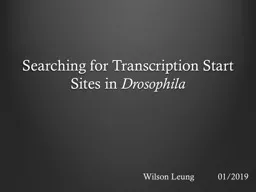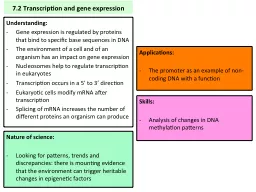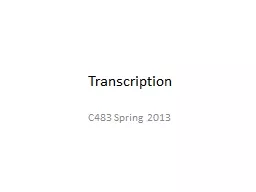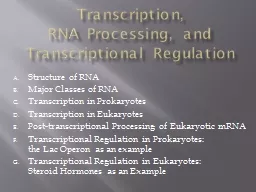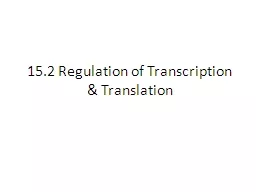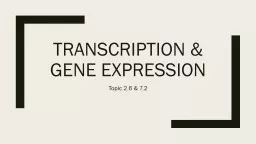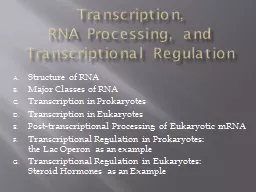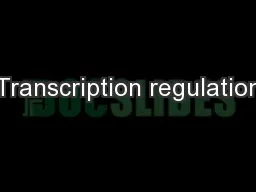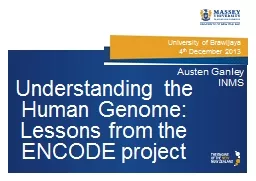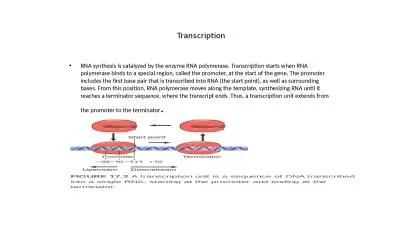PPT-Searching for Transcription Start Sites in
Author : liane-varnes | Published Date : 2019-02-01
Drosophila 012019 Wilson Leung Outline Transcription start sites TSS annotation goals Promoter architecture in D melanogaster Find the initial transcribed exon
Presentation Embed Code
Download Presentation
Download Presentation The PPT/PDF document "Searching for Transcription Start Sites ..." is the property of its rightful owner. Permission is granted to download and print the materials on this website for personal, non-commercial use only, and to display it on your personal computer provided you do not modify the materials and that you retain all copyright notices contained in the materials. By downloading content from our website, you accept the terms of this agreement.
Searching for Transcription Start Sites in: Transcript
Download Rules Of Document
"Searching for Transcription Start Sites in"The content belongs to its owner. You may download and print it for personal use, without modification, and keep all copyright notices. By downloading, you agree to these terms.
Related Documents

